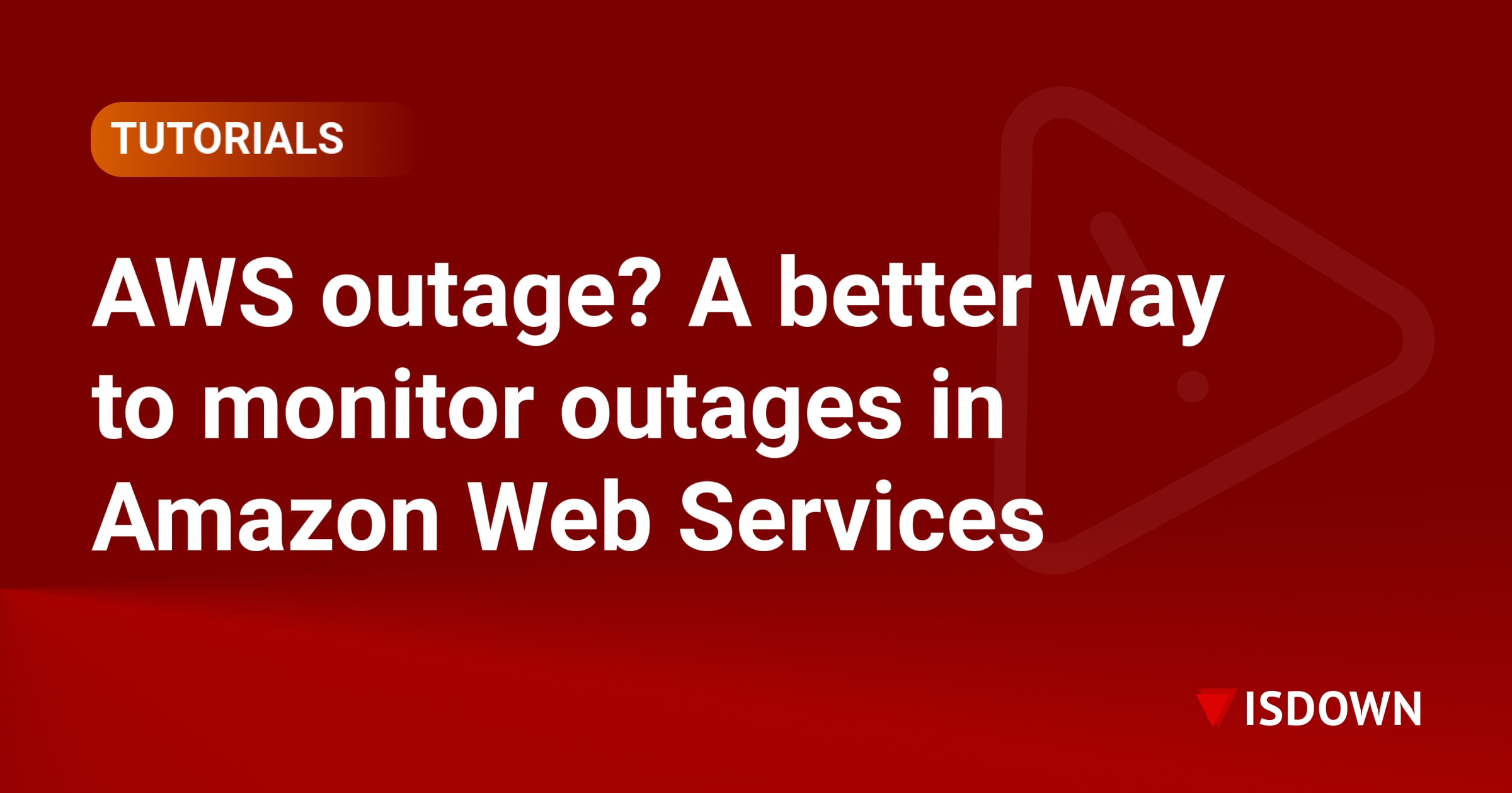Building a K12 IT Command Center: Monitor All Your Educational Services
Managing technology in K-12 schools has become increasingly complex. With dozens of educational platforms, administrative systems, and communication tools running simultaneously, IT teams need a comprehensive k12 it monitoring dashboard to maintain visibility across their entire technology ecosystem.
The Challenge of Modern School Technology Management
School districts today rely on an average of 50-100 different technology services. From learning management systems and student information platforms to communication tools and security systems, each service plays a critical role in daily operations. When any of these services experience issues, the impact ripples through classrooms, administrative offices, and even homes where students and parents depend on reliable access.
Traditional monitoring approaches, where IT staff manually check individual service status pages or wait for user complaints, simply don't scale. By the time someone reports an issue, dozens or hundreds of users may already be affected, leading to frustrated teachers, lost instructional time, and overwhelmed help desks.
What is a School Technology Command Center?
A school technology command center serves as the nerve center for all IT operations in a district. At its core, this command center features a centralized it monitoring schools dashboard that provides real-time visibility into every critical service. Think of it as mission control for your educational technology infrastructure.
The most effective command centers combine several key elements:
- Real-time service monitoring across all platforms
- Automated alerting for service disruptions
- Historical data tracking for pattern recognition
- Clear communication channels for stakeholder updates
- Integration with existing IT service management tools
Essential Components of Your Education Service Dashboard
Building an effective education service dashboard requires careful consideration of what to monitor and how to present that information. Here are the critical components every K12 IT team should include:
Service Health Monitoring
Your dashboard should track the operational status of all essential educational services. This includes learning management systems like Canvas or Schoology, productivity suites like Google Workspace for Education, student information systems, and specialized educational applications. Each service should display clear status indicators using standard color coding: green for operational, yellow for degraded performance, and red for outages.
Performance Metrics
Beyond simple up/down status, track key performance indicators that affect user experience. Response times, login success rates, and API availability all provide valuable insights into service health before users notice problems.
Alert Configuration
Configure intelligent alerts that notify the right people at the right time. Set up escalation paths based on severity levels and affected services. For example, a minor degradation in a supplementary learning app might generate a low-priority ticket, while an outage in your student information system triggers immediate notifications to senior IT staff.
Communication Tools
Integrate communication capabilities directly into your dashboard. When issues arise, you need to quickly inform stakeholders through multiple channels. This might include automated email updates to principals, SMS alerts to IT staff, or status page updates for teachers and parents.
Implementation Strategy for K12 IT Teams
Successfully implementing a k12 it monitoring dashboard requires a phased approach that minimizes disruption while maximizing value.
Phase 1: Inventory and Prioritization
Start by cataloging all technology services used across your district. Work with department heads, teachers, and administrative staff to understand which services are mission-critical versus nice-to-have. This inventory becomes the foundation for your monitoring strategy.
Phase 2: Tool Selection
Choose monitoring solutions that can aggregate data from multiple sources. Many educational services provide status pages or APIs for monitoring. Tools like IsDown can automatically track these services and consolidate the information into a single dashboard, eliminating the need to build custom integrations for each platform.
Phase 3: Dashboard Design
Design your dashboard with different audiences in mind. IT staff need detailed technical information, while school administrators want high-level status updates. Consider creating role-based views that present relevant information without overwhelming users with unnecessary details.
Phase 4: Process Integration
Connect your monitoring dashboard to existing IT processes. This includes ticket creation in your help desk system, on-call rotations for after-hours support, and communication protocols for different types of incidents. Learn more about building effective incident response playbooks to streamline your response procedures.
Best Practices for Maintaining Your Command Center
A school technology command center is only effective when properly maintained and continuously improved.
Regular Review and Updates
Schedule monthly reviews to assess which services are being monitored and whether your alerting thresholds remain appropriate. As your district adopts new technologies or retires old ones, update your monitoring configuration accordingly.
Staff Training
Ensure all IT team members understand how to use the dashboard effectively. Create documentation for common scenarios and establish clear procedures for responding to different types of alerts. Regular drills help reinforce these procedures and identify areas for improvement.
Stakeholder Communication
Develop templates for communicating service issues to different audiences. Teachers need to know how an outage affects their lesson plans, while parents want to understand when their children can access homework platforms again. Clear, timely communication prevents confusion and reduces support ticket volume.
Performance Analysis
Use historical data from your dashboard to identify patterns and prevent future issues. If certain services consistently experience problems during peak usage times, work with vendors to address capacity concerns before they impact learning.
Measuring Success
Track key metrics to demonstrate the value of your centralized monitoring approach:
- Mean Time to Detection (MTTD): How quickly you identify issues compared to before implementing the dashboard
- Mean Time to Resolution (MTTR): The average time to resolve incidents
- User Impact Minutes: Total minutes of service unavailability multiplied by affected users
- Help Desk Ticket Volume: Reduction in reactive support requests
- Stakeholder Satisfaction: Feedback from teachers, administrators, and parents
Looking Forward
As educational technology continues to evolve, your school technology command center must adapt. Emerging trends like AI-powered learning platforms, virtual reality classrooms, and IoT-enabled campus security systems will add new monitoring requirements. By establishing a solid foundation now, you'll be prepared to incorporate these technologies seamlessly.
The investment in a comprehensive k12 it monitoring dashboard pays dividends through improved service reliability, faster incident response, and better resource allocation. Most importantly, it ensures that technology enhances rather than hinders the educational experience for students and teachers.
For K12 IT teams ready to take the next step, exploring how to monitor multiple school platforms from one dashboard provides practical guidance on consolidating your monitoring efforts. With the right tools and processes in place, you can transform reactive IT support into proactive service management that keeps learning on track.
Frequently Asked Questions
What services should be included in a k12 it monitoring dashboard?
Prioritize mission-critical services first, including student information systems, learning management platforms, communication tools, and security systems. Gradually expand to include supplementary educational apps, library systems, and administrative tools based on their impact on daily operations.
How much does it cost to implement a school technology command center?
Costs vary depending on district size and chosen tools. Cloud-based monitoring solutions typically range from $100-500 per month for small districts to several thousand for large implementations. Consider starting with essential services and expanding as you demonstrate value to stakeholders.
Can our existing IT staff manage a centralized monitoring system?
Yes, modern monitoring platforms are designed for ease of use. Most K12 IT teams can implement and maintain a monitoring dashboard with proper training. The time saved through automated monitoring and faster incident response often frees up staff for other critical tasks.
How do we handle monitoring for cloud-based educational services?
Most cloud-based educational services provide status pages or APIs for monitoring. Use aggregation tools that can automatically track these external services alongside your internal systems, providing a complete view of your technology ecosystem in one place.
What's the difference between a k12 it monitoring dashboard and traditional network monitoring?
Traditional network monitoring focuses on internal infrastructure like servers and network devices. A K12 IT monitoring dashboard extends this to include external SaaS applications, cloud services, and third-party educational platforms that are critical to modern school operations.
How quickly can we expect to see results after implementing centralized monitoring?
Most districts see immediate improvements in incident detection times within the first month. Significant reductions in user-reported issues and help desk tickets typically occur within 2-3 months as the system identifies and helps resolve recurring problems.
 Nuno Tomas
Founder of IsDown
Nuno Tomas
Founder of IsDown
The Status Page Aggregator with Early Outage Detection
Unified vendor dashboard
Early Outage Detection
Stop the Support Flood
Related articles
Never again lose time looking in the wrong place
14-day free trial · No credit card required · No code required




